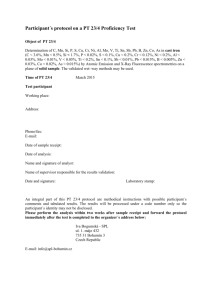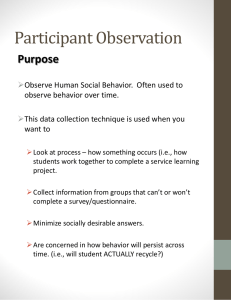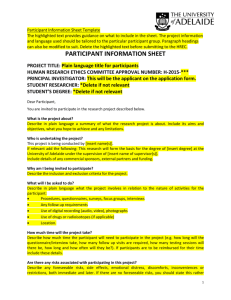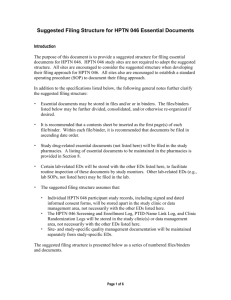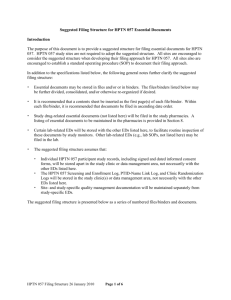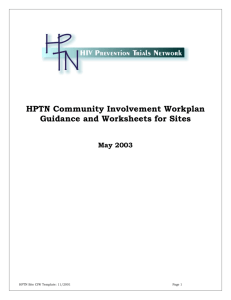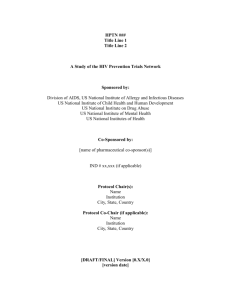Sample Study Close-out Checklist The following checklist is
advertisement
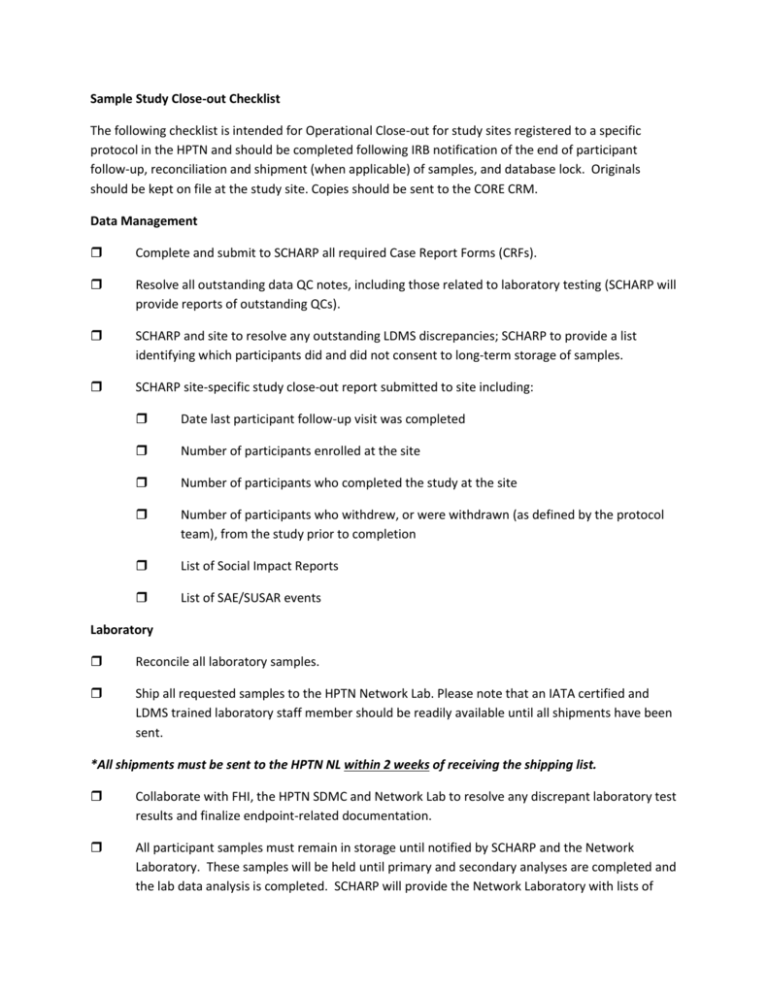
Sample Study Close-out Checklist The following checklist is intended for Operational Close-out for study sites registered to a specific protocol in the HPTN and should be completed following IRB notification of the end of participant follow-up, reconciliation and shipment (when applicable) of samples, and database lock. Originals should be kept on file at the study site. Copies should be sent to the CORE CRM. Data Management Complete and submit to SCHARP all required Case Report Forms (CRFs). Resolve all outstanding data QC notes, including those related to laboratory testing (SCHARP will provide reports of outstanding QCs). SCHARP and site to resolve any outstanding LDMS discrepancies; SCHARP to provide a list identifying which participants did and did not consent to long-term storage of samples. SCHARP site-specific study close-out report submitted to site including: Date last participant follow-up visit was completed Number of participants enrolled at the site Number of participants who completed the study at the site Number of participants who withdrew, or were withdrawn (as defined by the protocol team), from the study prior to completion List of Social Impact Reports List of SAE/SUSAR events Laboratory Reconcile all laboratory samples. Ship all requested samples to the HPTN Network Lab. Please note that an IATA certified and LDMS trained laboratory staff member should be readily available until all shipments have been sent. *All shipments must be sent to the HPTN NL within 2 weeks of receiving the shipping list. Collaborate with FHI, the HPTN SDMC and Network Lab to resolve any discrepant laboratory test results and finalize endpoint-related documentation. All participant samples must remain in storage until notified by SCHARP and the Network Laboratory. These samples will be held until primary and secondary analyses are completed and the lab data analysis is completed. SCHARP will provide the Network Laboratory with lists of participants who did not consent to long term storage. (This list will be forwarded to each site, and only then will the samples listed be destroyed.) Destroy any samples for participants that did not consent to long-term storage. PAB Reconcile all study product records Document and Destroy all remaining study product on site OR ship all remaining supplies for destruction. Regulatory Documents Review and assemble for long-term storage all required essential documents, including: Administrative and regulatory documentation Log linking participant names and PTIDs (which also serves as the completed participant identification code list required by ICH GCP guidelines) All study documents bearing participant names All study documents bearing participant ID numbers All specimen processing laboratory documents, such as processing worksheets, deviations, competency test results, training records, equipment calibration records, SOPs Study product records Notification to IRB that participant follow-up is complete, OR IRB closeout letter Prepare a written inventory of all documentation and storage locations. Documents must be stored securely and with adequate protection of participant confidentiality for a minimum of three years (non-IND study; 2 years for IND study) after primary analyses has been completed. No documents are to be destroyed without written permission from DAIDS. To the extent possible, organize and categorize all study documentation according to ICH GCP guidelines (ICH E6, Section 8.4). IRB In accordance with IRB/EC requirements, inform all responsible IRBs/ECs of the end of participant follow-up and database lock. RSC Deregister the protocol with RSC for your site. Site Complete, sign and date this checklist once completed. File original with other study documentation and send a copy to the HPTN CORE CRM. Investigator of Record Signature Investigator of Record Name CRS Name Date


